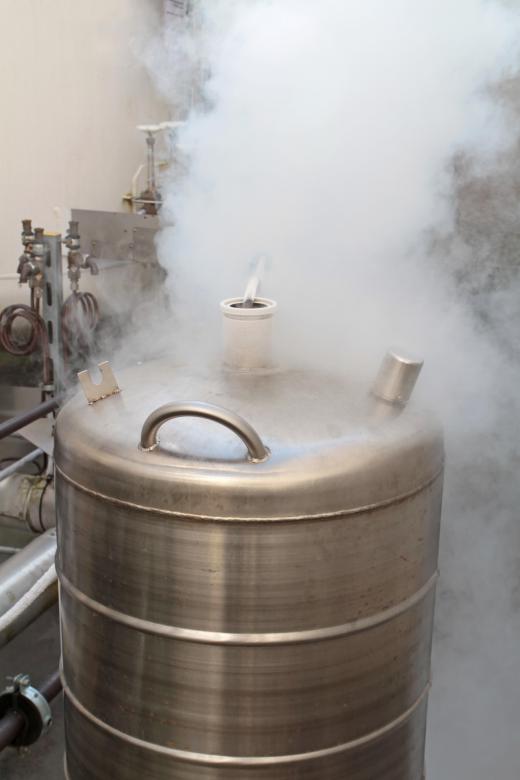What is Flash Evaporation?
Flash evaporation is a process by which some of a liquid instantly boils — or flashes — after it has been heated and sent through a chamber that has reduced pressure. It is the reduction in pressure that results in some of the liquid vaporizing. Vaporizing a liquid in such a way absorbs heat and can cause the surrounding area to cool drastically. This cooling effect allows the process to be used in some forms of refrigeration. Flash evaporation can also be used to purify liquids and, as such, can be used to desalinate water and aid in the creation of biofuels.
It is important to note that flash evaporation is contingent upon the properties by which liquids evaporate. One of the most important of these properties is that a liquid’s boiling point can be increased or decreased depending on the atmospheric pressure exerted upon it. For example, water boils at 212° Fahrenheit (100° Celsius) at sea level. That temperature drops to 194° Fahrenheit (90° Celsius) when on the top of a 10,000 foot (about 3.05 kilometer) mountain because there is less pressure there. Similarly, if the atmospheric pressure is increased to two atmospheres (about 14.7 psi or 760 torr), then water boils at 248° Fahrenheit (120° Celsius).

Boiling temperatures change with pressure because in order to boil, a liquid has to absorb enough heat in order to allow it to overcome atmospheric pressure and change into a vapor. At a lower pressure, the boiling point of most liquids reduces because there is less pressure for the liquid to overcome in order to become a vapor. Flash evaporation uses this phenomenon. A liquid is heated and sent through a valve into a chamber with less pressure. The reduction in pressure causes part of the liquid to turn into a vapor while the rest of the liquid cools.
The process of flashing can absorb so much heat that some liquids can be flashed in order to be used as cooling. This process is called auto-refrigeration and is used in some vapor compression refrigeration systems. Flash evaporation can also be used to desalinate water in a process called multi-stage flash distillation. In this process, salt water is flashed and the vapor cooled into pure water. The remaining salt water can then be sent through a serious of chambers with lower and lower pressure to be flashed again and again in order to produce more fresh water.
Flash evaporation can also be utilized are the production of biofuels. At different stages in biofuel production, a manufacturer may need to remove one liquid from another. In such a case, flash evaporation can be used to remove the more volatile—that is, a liquid that more easily evaporates—from the remainder of the liquid. For example, the process is used to remove excess methonal from the fuel during the production process. Similarly, after the fuel has been further processed and purified, unwanted water can be removed using flash evaporation.
AS FEATURED ON:
AS FEATURED ON:











Discussion Comments
Very nicely explained, clear, and technically easy to understand. Much better than the other websites, including Wiki.
Post your comments